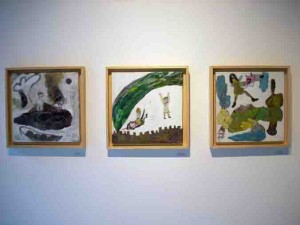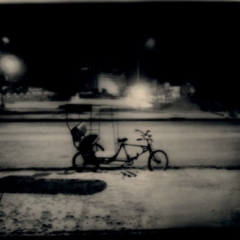by Julian Phillips
Although art, philosophy, and entertainment are signs of a healthy and comfortable society, the day to day drudgery of obligations often keeps the subtleties of our lives away from us. These subtleties — reoccurring moments that are unique jewels that time will never make again — are often seen by us as mundane instead of special. Thibaud Thiercelin’s Autofiction captures these jewels, subtleties, and ponderous points of life.
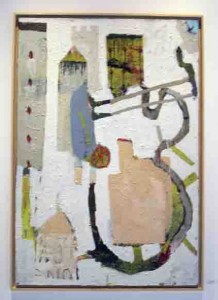
Thiercelin’s oil paintings have an almost dreamlike quality, allowing the layers of color to speak for themselves while in cahoots with each other. Some of Thiercelin’s figures and forms float on the canvas, while others sit in pools and strokes of color.
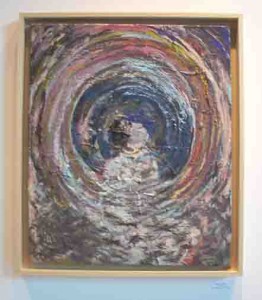
Thiercelin, who is French and lives in Paris, says in his statement that he paints “the world in flesh and bones.” Looking at the paintings, you see this is true. No forms are left to interpretation—as in expressionism—but you feel the strokes and layers are expressing more than just a shade of skin or colors of surroundings. What might be seen as simplicity in the paintings is really a bareness that seeks to draw you into the story that Thiercelin is living.
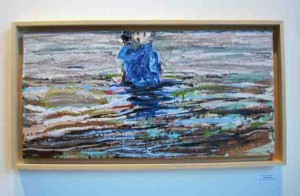
Some of the most interesting autofiction that Thiercelin is sharing in this new work is seen in his self-portraits. “Self-Portrait on a Swing” shows a sitting figure swinging in black space or on the black space. It is the vagueness of the blackness that gives the painting the feeling of suspension and movement. The artist says that the idea behind self-portraits was to explore the position of the artist in the world. He says, “In a sense, I have portrayed the artist’s plight in the society; his ‘impossibility’ [or] his ‘possiblilty’, as he is faced with the impregnable paths of the society.” In this sense the painting succeeds, celebrating what may be a lonely path of the artist, while it celebrates the artist’s freedom of internal and external exploration. Thiercelin’s use of swings is seen in another painting, “On a Swing,” which depicts not the exhilarating motion of movement, but hanging in gravitational balance. This balance and equilibrium is also something that appeals to the artist.
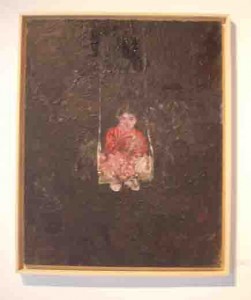
Thiercelin sees his paintings as a string of autofictions. Painting is autobiographical and his life is what he paints from. This is easy to see in “I throw you to the Sky,” which depicts fatherhood and family, but seems somewhat cryptic in “Nomadic Wall.” This painting shows a man or boy floating, held in a brick wall that seems to be more metaphoric than literal. The artist explains that his series of “Nomadic Walls” paintings instinctively began with a painting depicting a boy floating in a boat of bricks, which represented his autistic son. He further explains how during the Middle Ages nomadic walls were tapestries moved from castle to castle to warm the cold, stone walls. Thiercelin is a fan of the paradoxical comfort that comes in the name, for walls cannot move but historically provided a sense of consolation and belonging. The figure in the painting is content and seems to float through darkness and danger. Perhaps “Nomadic Wall” could also be seen as another self-portrait.
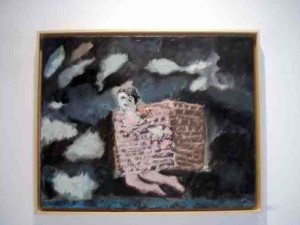
Thibaud Thiercelin’s Autofiction allows the viewer plenty of chances to peer into the diary of the moments of the artist’s existence. It is successful in allowing us to appreciate and consider themes we contain in our own lives as well. See it at Dalet Gallery through June 25.
